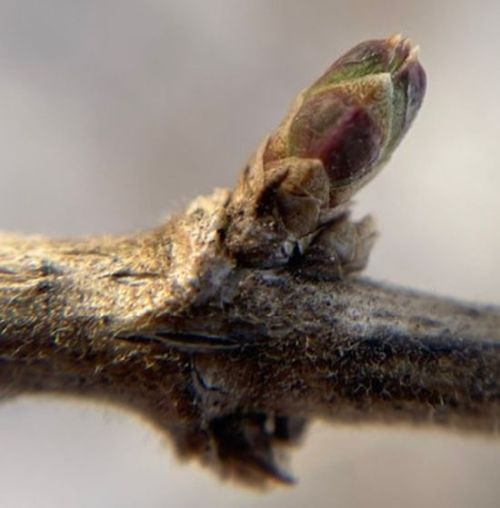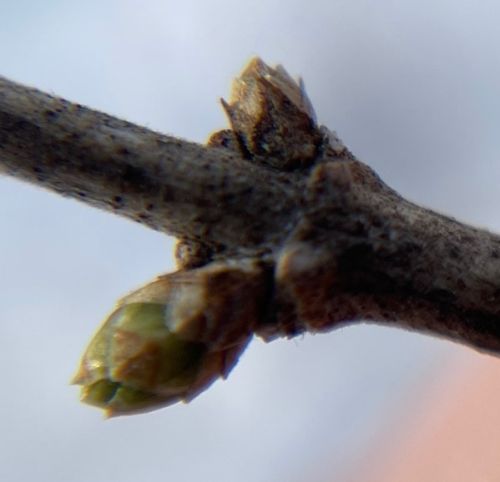Community Blog for Observers in Vermont
Observers make science happen.
Check out below for photos and stories about your great work for the Vermont Invasive Plant Phenology Project (VIPPP) and the Statewide Invasive Plant Phenology Monitoring Project (SIPPMoP), which are part of the Vermont Invasives Phenology Network (VIPN); we'll share phenophase updates, heads up when new podcast episodes drop, and news of the moment related to invasive plants. Our monthly Phenology Friends Zoom chats are also listed below.
We want to hear from you! Share your images or stories about observing by contacting us, with "blog" in the subject line.
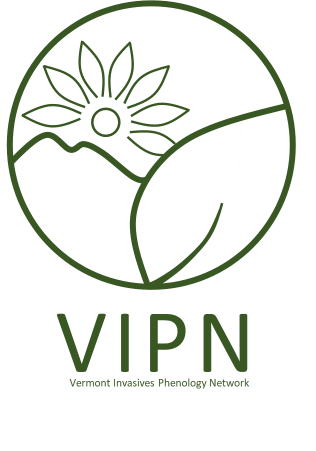
Table of Contents:
- June 28, 2023
- June 21, 2023
- June 14, 2023
- June 7, 2023
- May 31, 2023
- May 24, 2023
- May 17, 2023
- May 10, 2023
- May 3, 2023
- April 26, 2023
- April 19, 2023
- April 12, 2023
- April 5, 2023
- March 29, 2023
- March 22, 2023
- March 16, 2023
- March 15, 2023
EVENTS
Phenology Friends Zoom Chat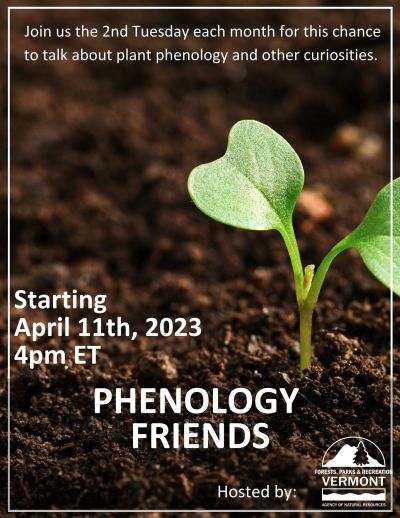
Second Tuesday of each month, 4pm-4:40pm ET (3pm CT)
April 11thMay 9thJune 13th- July 11th
- August 8th
- September 12th
- October 10th
Phenology Friends are Zoom* events for everyone, from newcomers to experienced observers. This space is a place to socialize with others interested in plant phenology, to ask questions, to discuss plants, and learn from one another.
*Zoom is an app or web-based video conferencing service. You will need to download the Zoom app on a mobile or tablet device, or can view from a web browser on your computer.
- Attend Phenology Friends
-
At the scheduled times, join the call; passcode for the room will be sent to all observers when they sign up to take part in a project.
Status of Spring
June 28, 2023
#SIPPMoP #VIPPP
As we enter the second week of summer in the Northeast, take a moment and reflect on what are the scientific signs of spring! And learn about how this spring compared to "normal" springs with this resource from National Phenology Network.
https://www.usanpn.org/news/spring
Quick Tips on Counting Flowers and Fruits
June 21, 2023
#VIPPP #SIPPMoP
#VIPPP observers, here are some quick tips on how to increase the quality of the data being collected; thanks to our project partners at the University of Minnesota for the reminder! https://peskyplants.umn.edu/community-blog#20220620
#SIPPMoP observers, please don't forget to turn in your data for the month, and thank you for being a part of this project.
And enjoy the longest day of the year today!

Nature Photography Day Tomorrow - June 15th
June 14, 2023
#VIPPP #SIPPMoP
We just learned about an interesting new day to celebrate: Nature Photography Day! According to the North American Nature Photography Association (NANPA), "Each year, June 15 is designated by the [NANPA] to promote the enjoyment of nature photography, and to explain how images are used to advance the cause of conservation and protect plants, wildlife, and landscapes both locally and globally.". This event has taken place since 2006, and here are some ways to celebrate #NaturePhotographyDay
As always, if you have photos or stories to share, send them our way, and happy Nature Photography Day tomorrow.
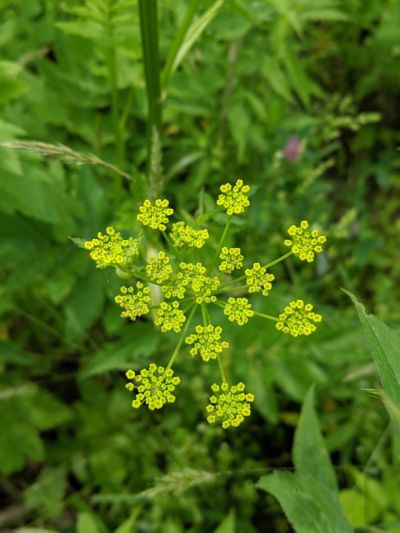
Phenology Friends -- One Week Away!
June 7, 2023
#VIPPP #SIPPMoP
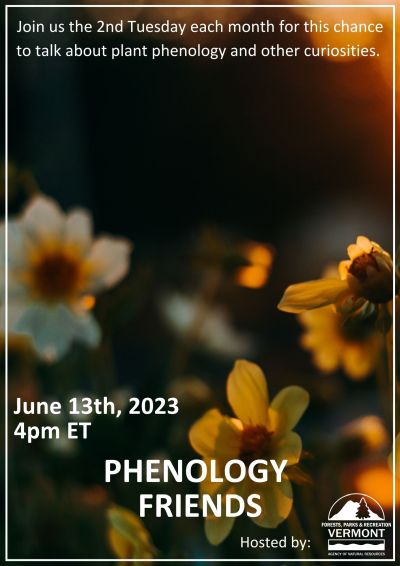 The Vermont Invasives Phenology Network hosts Phenology Friends once a month. These are Zoom* events for everyone, whether you are a new or an experienced observer. FPR staff will be joining - will you?
The Vermont Invasives Phenology Network hosts Phenology Friends once a month. These are Zoom* events for everyone, whether you are a new or an experienced observer. FPR staff will be joining - will you?
- June 13th, 2023 at 4pm EST (3pm Central)
- Details to join are above in the events section; if you have not received the passcode, please reach out to: anr.fprinvasiveplants@vermont.gov
* Zoom is a web-based video conferencing app. You will need to download the Zoom app if it is not already on your device.
Peekaboo, Flowers and Fruits!
May 31, 2023
#VIPPP
Across the study areas for #VIPPP flowers and fruits are making their appearances. Keep a close eye out for buckthorn flowers which are petite and pale, and likely to be hidden by almost full size leaves! And watch the base of flowers on honeysuckle, as the petals start to decay and turn creamsicle-orange, the unripe fruits at their base will become more apparent!


(1st) buckthorn leaves and flowers; (2nd) honeysuckle unripe fruits, flowers, and leaves.
Are there Open Flowers Yet?!
May 24, 2023
#VIPPP
#VIPPP, wondering when to start recording "Yes" for "Open Flowers"? Check out these resources for a refresher on flower phenophases for honeysuckle, buckthorn, and bittersweet. Also, can you spot the open flowers in the photo below, amongst the sea of flower buds and leaves?
Rhamnus cathartica phenophases
Celastrus orbiculatus phenophases
National Phenology Network Phenophase Primer
National Phenology Network Botany Primer
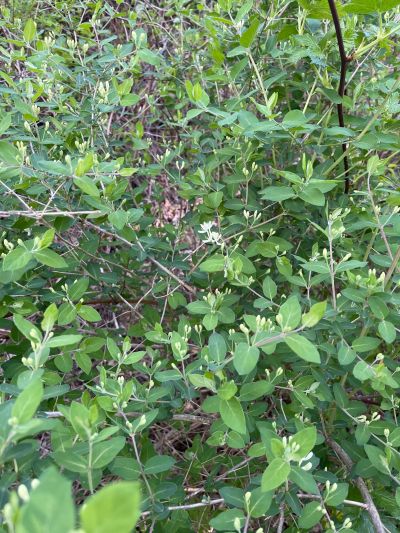
Experiencing the Phenology of Other Species
May 17, 2023
#SIPPMoP #VIPPP
On the way to your sites or out looking for invasive plants to observe, there has likely been a delightful surge of color. We hope you are able to enjoy all the sights of the season.

Keeping Up with Fast Moving Phenophases!
May 10, 2023
#SIPPMoP #VIPPP
When plants start growing, and phenophases feel like they're progressing quickly, make sure to always check for all potential phenophases. This photo shows leaves that are increasing in size, and flower buds. You would record "Yes" for all observed phenophases: "Leaves", "Increasing Leaf Size", "Flowers or Flower Buds".
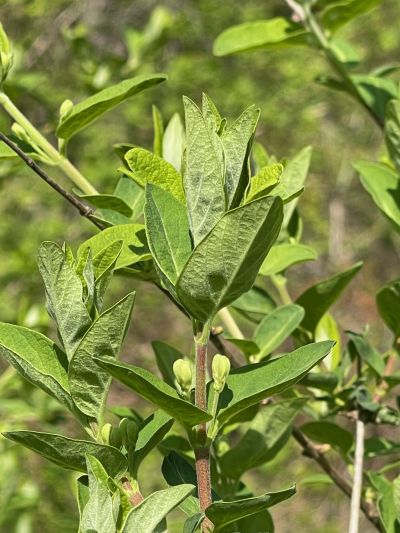
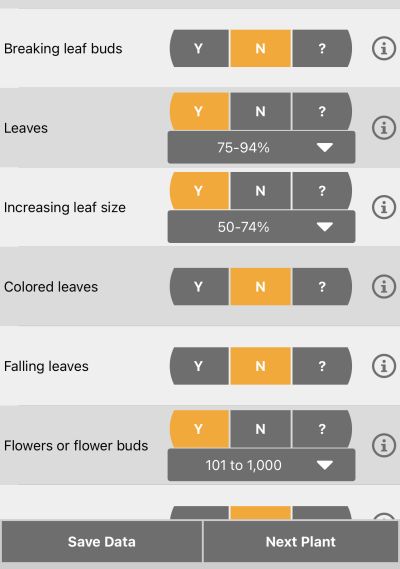
Also check out this great review of leaf phenophases when everything seems to happening so quickly!
And here's a useful practice tool for the phenophase "Increasing Leaf Size" (also available here, Part 5)
Phenology Friends in May - One Week Away!
May 3, 2023
#SIPPMoP #VIPPP
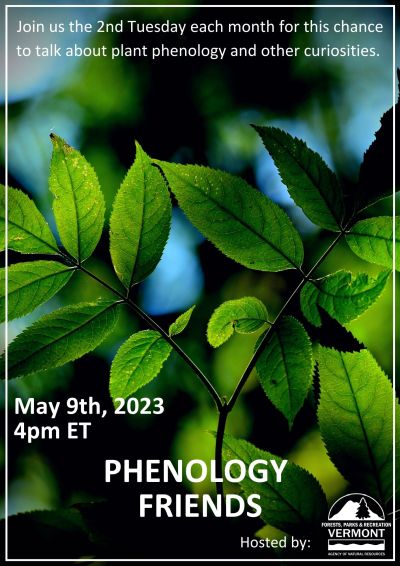
The Vermont Invasives Phenology Network hosts Phenology Friends once a month. These are Zoom* events for everyone, whether you are a new or an experienced observer. FPR staff will be joining - will you?
- May 9th, 2023 at 4pm EST (3pm Central)
- Details to join are above in the events section; if you have not received the passcode, please reach out to: anr.fprinvasiveplants@vermont.gov
* Zoom is a web-based video conferencing app. You will need to download the Zoom app if it is not already on your device.
April Highlights from Observers
April 26, 2023
#VIPPP #SIPPMoP
Thank you to all observers for a great first full month of phenology observing in 2023. Here are some highlights:
#VIPPP study species, honeysuckle, buckthorn, and bittersweet are all starting to get active at study areas across the state!
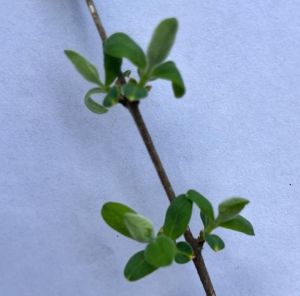
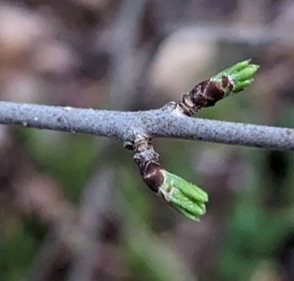
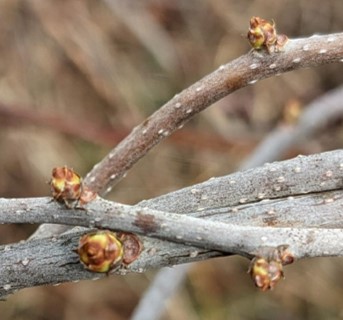
And observers for #SIPPMoP are sharing great photos of invasive plant and locally evolved plant activity; really feels like spring now!
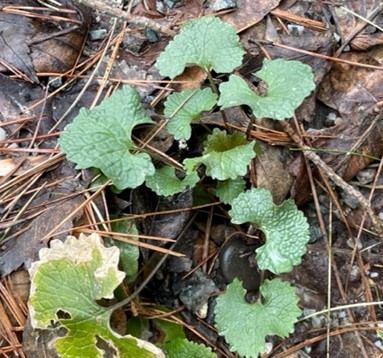
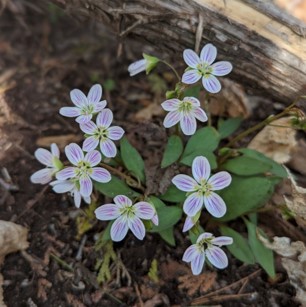
Earth Day this Week, and We're Already Racing Through Phenophases!
April 19, 2023
#VIPPP #SIPPMoP
It's officially spring! Observers are checking for signs of leaves at #VIPPP honeysuckle sites across the state, and breaking leaf bud at buckthorn sites. We're looking for visible petioles to positively confirm the presence of "leaves" phenophase. And for buckthorn, the green tips poking out between bud scales mean that "breaking leaf bud" phenophase is present. Check out these excellent photos from #VIPPP observer Lesley! And since it's Earth Day this week, if you'd like to learn more, check out the links from last week's blog post, also shared below.
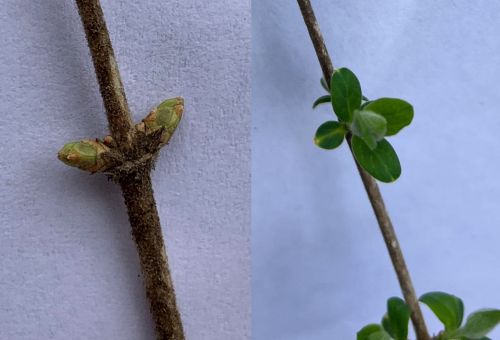
#SIPPMoP observers, please don't forget to turn in your data for the month, thank you for a great start to the season!
- History of Earth Day
- Oldie but Goodie -- Ways to Celebrate Earth Day
What to Do (and Not Do) When New to a Site
April 12, 2023
#VIPPP
Hello! Elizabeth, one of the VIPN coordinators, here. I have a fabulous opportunity for you to learn from me making mistakes! I observe for #VIPPP and was checking my data when I realized that my first observations of the season included “recent fruit or seed drop” even though I didn’t intend for that to be checked. If we look at the NPN definition for “recent fruit or seed drop”, it requires a comparison from a last visit, which is impossible if it’s your first visit! On closer investigation, I realized it was marked because I was using the “Mark All Phenophases As No” option at the top of the data sheet on the Nature's Notebook App, and hadn’t noticed it auto-selected “recent fruit or seed drop”.
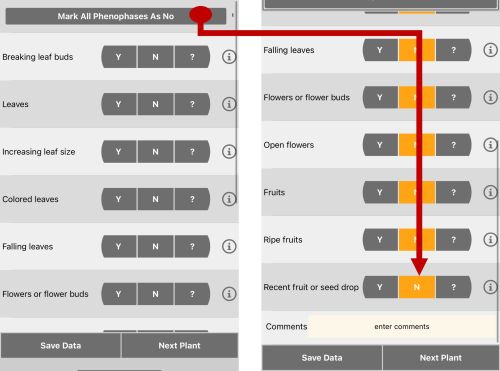
While this might be fine for later visits, I needed to go back and adjust my initial observations. This is a good thing to check for any data you’ve collected when starting to observe a new plant, independent of time of year.
And a big thanks to all who turned out for the first Phenology Friends Zoom chat on Tuesday. Here are links to resources we shared with each other during the event:
- History of Earth Day
- Oldie but Goodie -- Ways to Celebrate Earth Day
- Ologies Podcast
- Our Phenology Blog
- Minnesota honeysuckles
Phenology Friends - One Week Away!
April 5, 2023
#SIPPMoP #VIPPP
The Vermont Invasives Phenology Network hosts Phenology Friends once a month. These are Zoom* events for everyone, whether you are a new or an experienced observer. FPR staff will be joining - will you?
- April 11, 2023 at 4pm EST (3 pm Central)
- Details to join are above in the events section; if you have not received the passcode, please reach out to: anr.fprinvasiveplants@vermont.gov
* Zoom is a web-based video conferencing app. You will need to download the Zoom app if it is not already on your device.
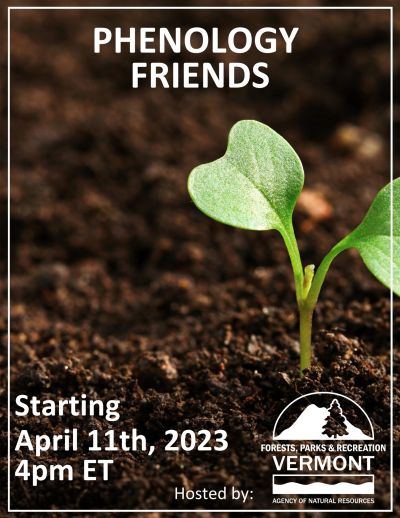
Breaking Leaf Bud!
March 29, 2023
#VIPPP
Surprise! Upon closer inspection, Lina had observed breaking leaf bud for honeysuckle last week at our Burlington study area. Last year we worked to define what "BLB" looked like for our plants, and came up with this addendum to the National Phenology Network's definition:
- Breaking leaf bud: "One or more breaking leaf buds are visible on the plant. A leaf bud is considered "breaking" once a green leaf tip is visible at the end of the bud, but before the first leaf from the bud has unfolded to expose the leaf stalk (petiole) or leaf base."
- Addendum: What BLB looks like is different for each of our study species. With Lonicera and Celastrus, look for vertical growth (upwards) occurring after you see lateral growth (sideways) with buds swelling, and the presence of leaf mid-rib and veins. Their leaf tips will likely be dark like the scales, but will grow upwards, whereas the scales won't (though they may expand sideways to allow for bud swell). This is tricky to see for Celastrus as the bud swell will be both sideways and upwards before leaves are seen - in this case watch for leaf midrib and veins. For Rhamnus, looking for green leaf tips is sufficient.
(Photos taken at 10x with a clip on lens to a mobile phone; can see similar details with a 10x loupe/hand lens)
Pictured below in the first photo, the elongated green and purple "scales" are actually the first few leaf tips, indicated by the presence of mid-rib and veins, and likely won't grow much larger. Additional leaf tips will start to poke through the center. This outward and upward swelling paired with seeing the midrib and vein indicate that the phenophase "breaking leaf bud" has been detected for honeysuckle.
In the second photo below, you can compare "breaking leaf bud" seen on the lower bud to just "bud swell" seen on the upper bud.
Congrats on seeing the first signs of growth for the season, Lina! If you see this for honeysuckle where you observe, record "Y" for breaking leaf bud.
Checking for Early Phenophases
March 22, 2023
#VIPPP
It's officially spring! Lina checks for signs of breaking leaf bud at her #VIPPP honeysuckle site. She is looking for the buds to have some color and to appear swollen. For honeysuckles, we're looking for vertical growth (upwards) occurring after you see lateral growth (sideways) with buds swelling. Their leaf tips will likely be dark like the scales, but will grow upwards, whereas the scales won't (though they may expand sideways to allow for bud swell).
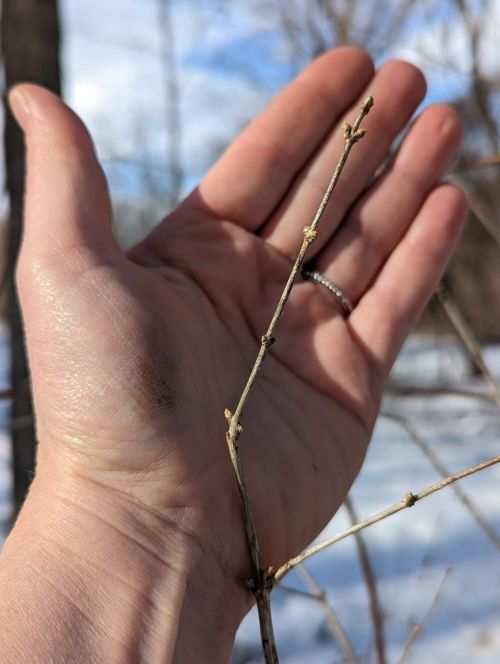
Observing the precursors of breaking leaf bud for bittersweet is also tricky -- as the bud swell will be both sideways and upwards before leaves are seen - in this case, watch for leaf midrib and veins to appear! And for buckthorn, looking for green leaf tips is sufficient.
Save the Dates for Phenology Friends!
March 16, 2023
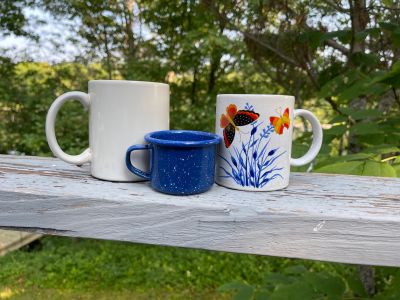
The Vermont Invasives Phenology Network hosts Phenology Friends once a month. These are Zoom* events for everyone, whether you are a new or an experienced observer. From April through October, Phenology Friends events are your chance to socialize with other volunteers, ask questions, discuss plants, and learn from one another.
-
April 11, 2023 at 4pm EST (3 pm Central)
-
May 9th, 2023 at 4pm EST (3 pm Central)
-
June 13, 2023 at 4pm EST (3 pm Central)
-
July 11, 2023 at 4pm EST (3 pm Central)
-
August 8, 2023 at 4pm EST (3 pm Central)
-
September 12th, 2023 at 4pm EST (3pm Central)
-
October 10th, 2023 at 4pm EST (3pm Central)
* Zoom is a web-based video conferencing app. You will need to download the Zoom app if it is not already on your device.
Welcoming spring and new volunteers
March 15, 2023
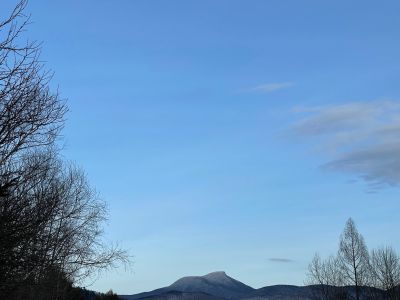
Soon enough Vermont's winter vistas will be warmed by the bursting of new leaves and by the excitement for spring. We're so thrilled to have you join us on this journey to support the good work of the Vermont Invasives Phenology Network, as it grows with new projects. Right now, those include the Vermont Invasive Plant Phenology Project and the Statewide Invasive Plant Phenology Monitoring Project. And as we always like to say on VTinvasives, thank you for being willing to -- learn. get involved. make a difference.
Vermont Department of Forests, Parks & Recreation would like to acknowledge the financial and technical support provided by the USDA Forest Service, Northeastern Area State and Private Forestry that enables us to run projects and provide outreach such as this.

